I wrote this article in Japanese and translated it into English using ChatGPT. I also used ChatGPT to create the English article title. I did my best to correct any translation mistakes, but please let me know if you find any errors. By the way, I did not use ChatGPT when writing the Japanese article. The entire article was written from scratch by me, Saikawa Goto.
Introduction
Movies and books covered in this article
Three takeaways from this article
- Even if we can’t draw, it’s natural to be moved by paintings, but it’s hesitated for someone who can’t play shogi to say they were moved by a match.
- The achievements of Habu Yoshiharu who broke the stalemate of the traditional shogi world and restarted shogi as a game that seriously competes for victory.
- Watanabe Akira’s awareness of the issues of how to increase ‘shogi fans who don’t play’ and the “truth” that might be able to be reached at the end of tremendous research.
Self-introduction article


Published Kindle books(Free on Kindle Unlimited)
“The genius Einstein: An easy-to-understand book about interesting science advances that is not too simple based on his life and discoveries: Theory of Relativity, Cosmology and Quantum Theory”
“Why is “lack of imagination” called “communication skills”?: Japanese-specific”negative” communication”
The quotes in the article were translated using ChatGPT from Japanese books, and are not direct quotes from the foreign language original books, even if they exist.
Why is it Often Thought that Shogi is Not Enjoyable Unless We Can Play it? Discover a New Perspective on Shogi and the Greatness of Habu Yoshiharu in This Book

The central question of this book is “why do people think that ‘matches of shogi are not interesting if we don’t understand the rules and how to play’?” However, because there has been an increase in the number of “MIRUSHO” (people who enjoy watching shogi without understanding the rules) recently, and some may not understand the meaning of the above question. However, when this book was published, there was no easy way to watch shogi online, and shogi was not as easily accessible as entertainment as it is today. It was more likely considered as something that “shogi lovers who have experience playing it themselves watch enthusiastically.”
And it is this book that raises a question such a way shogi is viewed.

The author is a Silicon Valley resident who wrote a best-selling book called “ウェブ進化論(theory of web evolution).” While not particularly strong at playing shogi, the author enjoys watching shogi matches as a hobby. This book explores the enjoyment of shogi and the greatness of Habu Yoshiharu, starting from the author’s love of watching shogi matches. As someone who understands the rules of shogi but is not particularly strong at it, I found this book very enjoyable and incredibly interesting.
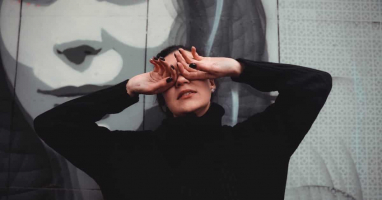
This book is a combination of two books previously published by the author, with new content such as a real-time commentary of Habu Yoshiharu’s matches and an interview with him. Even if you are not familiar with shogi, I think you can still enjoy it if you have even just a little bit of interest in the game. So, I highly recommend giving it a read (which does not appear to have been translated into English at this time though).

Why do We Feel a High Hurdle When it Comes to “Watching Shogi Matches”?
As I mentioned earlier, let me touch on the central theme of this book again. Regarding this point, the book clearly states the following:
The main theme that runs through the two books is about the act of “watching shogi matches”.
Let me quote a more specific section from this book.

When it comes to shogi, it is common sense that it is something to be played by two people facing each other across a board, and the act of “playing shogi” means to move the pieces. If someone says they like shogi as a hobby, it usually means they enjoy playing shogi. And those who don’t play or aren’t good at shogi are often thought to not understand even if they watch a game.
However, because recently there has been an increase in “MIRUSHO” who are not necessarily interested in shogi itself but rather things like what snack Fujii Souta eats during a game or what kind of gestures the players make during a match, these feelings may be fading. On the other hand, there may be those who feel “I can understand.” I was originally on the side of feeling the same way. I thought that I was a weak shogi player, so there was no way that I could understand even if I watched a professional match.
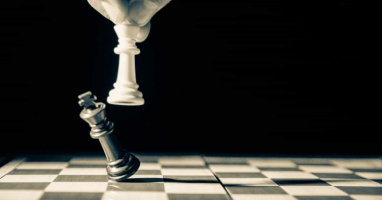
However, reading the next passage in this book made me feel like “I see, it is indeed strange to have such a feeling towards shogi.”
But if you think about it, it’s a strange thing. There are people who “write novels” and people who “read novels”. There are people who “perform music” and people who “listen to music”. There are people who “play baseball” and people who “watch baseball”. No one says to those who say their hobbies are “reading novels”, “listening to music”, or “watching baseball”, “you can’t enjoy it if you can’t write a novel”, “you can’t enjoy it if you can’t play music”, or “it’s pointless for someone who doesn’t play baseball to watch it”, right? However, when it comes to shogi, people tend to say things like “if you don’t play shogi, watching it won’t be interesting, and you won’t understand it”.

I read this passage and thought, “That’s definitely true.” There may be other things that are perceived in a similar way, but at least in the case of “shogi,” the sense that “it’s not interesting to watch for people who don’t play” seems to exist as a matter of course.
By the way, I’m not good at the act of “watching something that’s happening in real-time,” not just in shogi but in things like sports, F1, and horse racing. I don’t have any hobbies for watching shogi, sports, F1, horse racing, etc. Rather than liking or disliking them, I think it’s a matter of being good or bad at it. No matter what I watch, I end up with a sense of “just tell me the result.” So, I’m not comparing my own feelings about sports and shogi watching. I just have a vague understanding that “the way we receive sports and shogi is definitely different.”

So where does this difference come from? The author summarizes it after mentioning Ichiro, saying,
In the world of baseball with Ichiro, it looks too easy through the TV screen. Therefore, fans can enjoy it by feeling like they understand it through the images, which is why baseball has become a popular sport with a huge fan base.
In any sport or in the intellectual game of shogi, it is impossible for the viewer to fully understand or feel the depth of it. But while baseball “looks easy on the TV screen” and so “can be enjoyed by feeling like we understand it,” if left alone, shogi can evoke a “sense of being too advanced and difficult to understand” for the viewer.

Indeed, that’s true. If you imagine the stereotypical image of “uncles watching baseball,” you’ll probably see them heckling and saying things like, “Why didn’t you swing there?!” or “Can’t even catch a ball like that?!” Of course, there may be some who have experience playing baseball, but most “uncles watching baseball” are probably worse at baseball than the pros. Yet, they can watch the game with a perspective as if they are better at it. The author says that there is a feeling that “baseball looks too easy on TV,” which I don’t have, but since there are indeed such uncles, I suppose that kind of “magic” exists. And that “magic” is what creates a vast number of “baseball fans.”
However, this is not the case with shogi. It’s hard to imagine someone watching a shogi game and getting angry and saying, “Why did you play such?!” Instead, I think it’s more like “Huh? Why did he play such?”, which expresses the confusion of “I’m sure the move the shogi player made is the correct one, but I don’t know why it’s correct.” I think this feeling is completely different from that of people watching baseball.
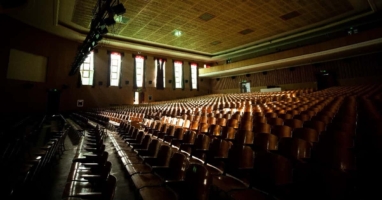
In addition, Habu Yoshiharu’s words in this interview were also impressive.
For example, in the case of painting, even if you can’t paint yourself, you are allowed the freedom to say “I was moved”. You wouldn’t be told, “You can’t paint, can you?” if you said you were moved by the Last Judgment in the Sistine Chapel. But if you say you were moved by watching shogi, people would say “How good are you at playing?” (haha) To become able to play beautiful shogi like a professional, we have to devote our whole life to it. Those who do not have the perseverance to do so will be fans who just watch, but if they are not accompanied by their shogi skills, they need to refrain from speaking out. I think there was such tacit understanding in the world of shogi.
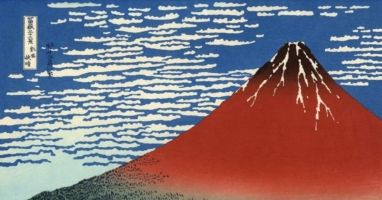
Certainly, with painting, you wouldn’t hear someone say, “You can’t paint, can you?” But with shogi, the reaction is more like, “How good are you at playing?” I think the interesting thing about this book is that it makes you realize this point more than anything else. I myself always thought, “That’s just the way shogi is,” and didn’t realize how odd it is compared to other things. Whatever that is, it’s difficult to question something that we consider to be “obvious.” The question posed in this book, “Why is it thought that shogi isn’t fun unless you can play it?” felt very fresh in that sense.
Rather, it is Pointed Out that Shogi is More “Interesting to Watch”
In this way, shogi has such a hurdle, but Habu Yoshiharu makes the point that in terms of “the fun of watching through television or the internet,” shogi should be more interesting than anything else.

When watching sports on TV, we only see a limited amount of information, such as when the ball is being thrown or caught, and we miss out on the full picture of the game that can be seen when watching it at the stadium. However, in the case of shogi, the same amount of information is shared by everyone. So I feel it has a lot of potential. It allows everyone to see and share the same situation on shogi board.
I think this is also a perceptive point.
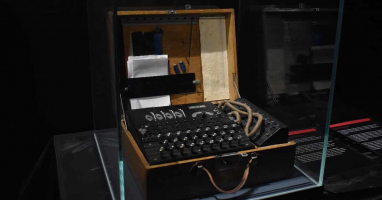
Nowadays, there is a system where we can watch baseball games as if we were at the stadium using technologies such as VR. However, normally people would watch baseball on TV or their smartphones. In that case, we can only see what the camera captures. When the pitcher and batter are shown, we don’t know what the player in center field is doing, and when the ball flies to the outfield, it’s hard to know what the infielder is doing.
I think this is true not only for baseball but also for general entertainment. The “full information at the scene” decreases significantly by passing through the “screen.”
However, shogi is different. Of course, it may not convey the “unique tension” felt only by being at the actual venue, but in the case of shogi, “all the information at the scene” is conveyed through the “screen.” Players and spectators can share the same information.

And that’s why Habu Yoshiharu says things like this:
To put it extremely, even if you don’t understand the rules, I think it’s still somewhat interesting to watch. Of course, if you do know the rules, you can appreciate the multifaceted appeal of shogi even more, but even if you don’t know the basics, I still think there’s some value as something to just watch.
While Habu Yoshiharu doesn’t mention anything specific about this point, I’d like to offer my own interpretation and explanation.

For example, in baseball, a camera can capture only a part of the “entire information at the scene.” Naturally, what “baseball fans want to see” will be prioritized in the footage. In other words, if someone who doesn’t know anything about the rules of baseball watches a game on TV, there may be situations where they don’t understand why the camera is showing that particular scene now. It means that since the information is being cut from the perspective of “baseball fans who understand the rules,” the footage may appear incomprehensible to someone who doesn’t know the rules.
If you can’t imagine this with baseball, try imagining watching some foreign sport on TV where you don’t know the rules at all. In the case of a ball game, for example, if there were a scene where the camera didn’t follow the direction of the ball, the viewer will be like, “???”. Although we can assume that there is probably some kind of rules, and that there are points of interest beyond the whereabouts of the ball, which is why the footage is such way it is, it is impossible to understand the detailed situation without knowing the rules. In this way, the “asymmetry” of information directly affects the act of “watching.”

However, as previously mentioned, in the case of shogi, “all the information at the site” is displayed. Rather than selecting and cutting information based on the viewpoint of “shogi fans who understand the rules,” the audience can obtain information equivalent to that of the players. This means that “which information to focus on” depends on the viewer’s choice.
By thinking in this way, it becomes easier to understand the feeling that “even if you don’t know the basics, I still think there’s some value as something to just watch.” I thought it was a very interesting observation.

In this book, they also talk about Watanabe Akira, who is one of the top professional shogi players. There are five super geniuses who became professional shogi players before graduating from junior high school, and he is one of them. The other four are Kato Hifumi, Tanigawa Koji, Habu Yoshiharu, and Fujii Souta. You could say that they’re all top-notch players.

Watanabe Akira, who wrote a book called “頭脳勝負”, showed awareness that he needs to increase the number of “shogi fans who don’t play” and be able to enjoy watching, even if they’re not good at playing.
He is taking various initiatives himself with such awareness. For example, he opened his own blog to show his daily life as well as beyond the game. He has also started a groundbreaking initiative to “explain honestly the day after the game,” not only for games that he won but also for games that he lost. He explains what he was thinking and what his intentions were in his own words. The audience can learn “all the information on the scene,” but of course, they cannot look into the “mind of the shogi player.” Therefore, his actions can be said to be a very important element that complements “watching shogi matches.”
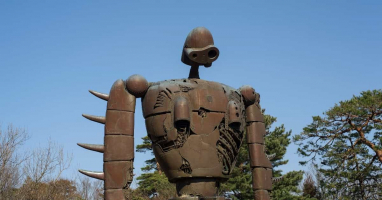
The professional shogi players need to dedicate time to daily training, so they are always short on time. Despite this, top pro Watanabe Akira is making various efforts to increase the number of shogi fans who just watch the game. His awareness of the problem would have brought about significant changes to the shogi world, as pointed out in this book. It is said that his efforts have paid off, as there are more people now called “MIRUSHO”.
Revolution” Brought by Habu Yoshiharu to the Shogi World

Another theme of this book is how amazing of a shogi player Habu Yoshiharu is. Of course, even people who aren’t familiar with shogi would have heard of his achieving unprecedented records one after another and may feel that “I understand he is amazing enough.” However, this book introduces surprising episodes that make you think, “Oh, I see, he was causing such a ‘revolution’.”
One such episode is about “how to proceed with the opening.”

Before explaining this, let me quote a passage from the book about the state of the shogi world before Habu Yoshiharu broke through.
When Mr. Habu became the first 7-winning titles holder (note by the author: in 1996), there were few options for tactics in the entire shogi world, and any tactics would often result in specified phases on the board. It means that it was an era when professionals couldn’t show their individuality in the opening.
When I asked Habu about the essence of modern shogi, he always talked about how there was no freedom on the board until recently. (omission) What Habu was concerned about was the unique “tradition of respecting the predecessors” and “unspoken rules” that existed in the shogi world, similar to the MURASHAKAI (village-bonded society) in Japan, which hindered the freedom on the board.
Those who are familiar with shogi may already know this, but it may require some explanation for those who are not.
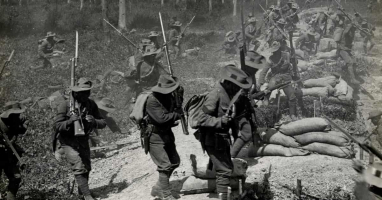
Japanese shogi culture has a long tradition, with the current rules being established during the Muromachi period (Japan over 500 years ago). However, as time passed, “unspoken rules” began to emerge, just as with any other long-lasting tradition. One of these unspoken rules was how to move pieces during the opening phase of a match. For a long time, shogi was thought to be a game where victory was determined in the endgame, so the opening was often played in a way that was considered “normal” or even pressured to be played a certain way. It was a world where “KATA (style)” and “REIGI (courtesy)” were emphasized more than matches that seriously competed for victory, such as karate or tea ceremony. Therefore, until Habu Yoshiharu became a professional shogi player, the “unspoken rule” of “this is how the opening should be developed” continued to be passed down.
However, Habu boldly spoke out against this trend. In 1994, when he first challenged for the MEIJIN title (the most prestigious title in shogi), he declared that he would not fight with ordinary tactics and played shogi just as he had announced.

However, it is said that the heavyweights of the shogi world were furious about such behavior. Let’s take a look at the “criticisms” written in this book.
- As a top figure in the shogi world, at least when young, one must be orthodox in playing the IBISHATOU (not moving the piece called HISHA in the opening).
- On big stages such as the MEIJIN title match, one should play YAGURA, the traditional shogi tactic.
- Despite of SENTE (the first player) on a big stage, we can’t believe that you moved HISHA in the opening against a senior opponent.

To those who are not familiar with shogi, it might be difficult to understand because there are unfamiliar terms. It may be like saying “The first pitch to the leadoff batter should be thrown a straight.,” “Throwing a split finger pitch from the first year as a pitcher is wrong,” or “It’s rude to throw a pitch that’s right on the edge of the plate to a much more experienced opponent” in baseball (I’m not confident because I’m not familiar with baseball).
Even relatively new shogi fans who know a little about shogi (but are not old-timers) would find these claims “difficult to understand,” and I feel the same way. I think this is because we consider “shogi” to be “matches that seriously compete for victory.” And the person who brought the “obvious” sense that “shogi is a match that seriously competes for victory” to the shogi world is Habu Yoshiharu.
If GOTE (the second player) can overcome their laziness of blindly following SENTE until the assumed phases, there is no doubt that the future of shogi is waiting beyond. This is how Habu raised the issue.

It may be difficult for us, who only know modern shogi, to imagine, but until about 30 years ago, “tradition” was valued more than anything else in the world of shogi, and “constraints” were placed on the freedom of shogi pieces movement by players. By overwhelming such “tradition” with his exceptional skills, he created a path to “modern shogi,” which was his tremendous achievement. In fact, this book describes specific changes that have occurred.
In modern shogi, certain tactics that were once considered “JADO (a wrong way of playing)”, have now become commonplace due to the greater freedom of movement on the board. As a result, vague terms like “JADO” based on uncertain values have disappeared from the shogi world.
In modern shogi, while the use of the term “JADO” may still arise in relation to research using AI software, there will probably be no situation that will be judged “JADO” in comparison to shogi traditions.

Habu Yoshiharu’s approach to shogi reflects in his attitude towards the game itself.
The biggest difference is in the way of fighting in the era. Mr. Ooyama fought against people, but Habu-san is fighting against shogi itself. For example, rather than Habu-san doesn’t expect his opponent to make mistakes, but thinks it’s better to get closer the truth of shogi by keeping a balanced position as long as possible.
It seems that Habu is saying that it is a waste not to accurately record the evolution process of modern shogi, rather than individual things such as winning and losing in a match or the truth in each phase. It looks like he is thinking about something different from everyone else.
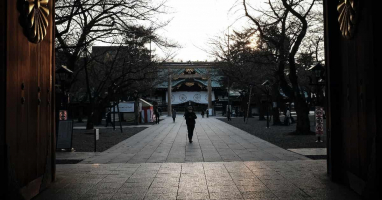
I feel there seems to be a certain twist here. Naturally, even those who valued “tradition” should have had the goal of “winning the match against the opponent”. That’s why they even played psychological games to expect the opponent’s mistakes. However, the very person who transformed shogi into “matches that seriously compete for victory” is interested in “the potential of shogi” rather than winning or losing.
That’s why he takes actions that are not normally considered.

Some shogi players often say, “Recently, when Habu gains the upper hand in a title match, he starts experimenting”. This means that the title match stage is used as a platform to verify the “hypothesis regarding the truth of shogi” that Habu has at that time.
While most shogi players would only focus on “how to beat the opponent” in such a big stage, Habu Yoshiharu seems to be “conducting experiments to discover the truth of shogi”. It’s safe to say that he fights in a completely different way from others.

Habu Yoshiharu probably realized during his process of conquering 7 winning titles in his youth that he couldn’t achieve anything greater by simply winning alone, and that in the art of shogi which involves pursuing the truth with another person, he couldn’t create anything more amazing by himself. He realized that having like-minded comrades (who were of course also his rivals) who mastered modern shogi was more important than anything else if he wanted to create something greater. This is because it is very difficult to determine the direction to take if there is no one around. It is believed that Habu’s philosophy of “opening up knowledge” to achieve the goal of increasing comrades sprouted within him at that time.
The reason Habu turned shogi into “matches that seriously compete for victory” is because he believed that he couldn’t reach the “truth” without doing so. That’s why sometimes Habu Yoshiharu gets angry at his opponents even when he wins a game. It’s an anger that says, “Why did you stop there?” Indeed, the outcome may already be decided. However, there should still be a future in this shogi. If they can go that far, theyu may see something. But if they resign, they won’t be able to reach that depth. So don’t give up in that way. The author imagines that Habu may harbor such anger.

Looking at it from this perspective, you can understand how unique a shogi player Habu Yoshiharu is.
The Rapid Changes in Modern Shogi and the Sense of Crisis About it
AI is making a huge impact on the world of shogi. In terms of “modern shogi’s changes,” the influence brought by AI is tremendously significant.

In this book, the focus is on “research without using AI software”. By removing the “shackles of tradition”, attention was turned to the previously overlooked openings and middle games, leading to new insights and ideas being created by professional players. In 2008, when Habu Yoshiharu became a qualified “EISEI MEIJIN title holder”, he remarked that it was “the period with the greatest change in the history of shogi in the past 10 years”. Many people followed the path of “exploring the ‘truth’ of shogi” that Habu Yoshiharu had pioneered, leading to the shogi world transforming into a “world where cutting-edge research overtakes old tactics”.
This book contains various descriptions of such changes.
In the latest research on openings, the difference in knowledge has a direct impact on the outcome, and the proportion of that impact is increasing.
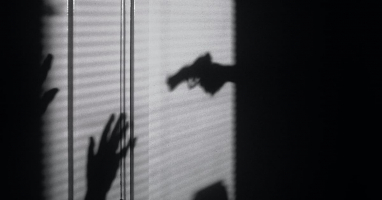
I can’t believe this is happening on the 2nd move… I never thought we would come to this era.
Before, Habu told me that ‘recently, even if we only look at the results of official matches, we can no longer pursue the true value of shogi’.

And I was also impressed by the following sentence, which expresses the heterogeneity of the existence of “shogi players” who create such changes.
Usually, people desperately think about how to change as technology progresses, but in the world of shogi, shogi players themselves are the embodiment of technology, and all the driving force for human progress and advancement lies in them. Thinking about it again, one cannot help but feel the enormity of shogi players’ intelligence and their otherness from other worlds.
As I mentioned earlier, the influence of “AI” is tremendous today, and there may be room for revision in the description that “shogi players themselves are the embodiment of technology.” However, no matter how much AI emerges, it is unlikely to reach “truth” without anyone who can understand and use it. The situation of “I don’t understand the logic, but this move that AI derived is strong” may arise any number of times, but that is simply “winning the game” and not “reaching the truth.” To reach “truth,” the advanced intellect of professional shogi players is still necessary.

Habu Yoshiharu says,
In other words, we need to create an environment that makes it easy to generate innovation, rather than relying on just one outstanding person to innovate. On the other hand, even if there is a person with a great idea, without such an environment, nothing will bloom, and no one will be able to make it bloom.
He also says that “in an era where everything else is easy to obtain, creativity is what’s most important.” And he asserts the following:
It may seem like creating something is a futile task, but isn’t it the most important thing?
It is his stance like this that makes Habu Yoshiharu a top runner, and I was made to feel that way.
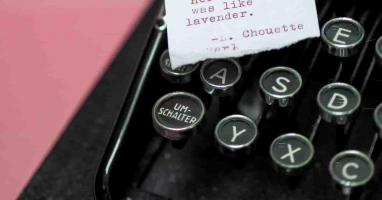
Conclusion
In this article, I focused on introducing the parts that caught my interest, but there were also descriptions that provide a “new perspective on shogi” and expand the possibilities of “watching shogi,” making it a work that allows you to see the game in a different way by explaining various elements, such as “the character of a shogi player seen through their moves,” “the psychological battle of FUUJITE (sealing a move until the next day during a two-day match),” and “the pressure of one-minute shogi.” If “MIRUSHO” read it, they will notice a new perspective, and for those who have never watched a shogi game, I think it could be a good starting point.

It is a work that packs various knowledge about modern shogi, while starting with the narrow topic of “watching shogi,” and it was also good to be able to feel again the greatness of Habu Yoshiharu.

Published Kindle books(Free on Kindle Unlimited)
“The genius Einstein: An easy-to-understand book about interesting science advances that is not too simple based on his life and discoveries: Theory of Relativity, Cosmology and Quantum Theory”
“Why is “lack of imagination” called “communication skills”?: Japanese-specific”negative” communication”










コメント